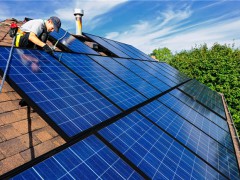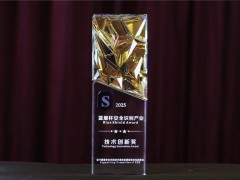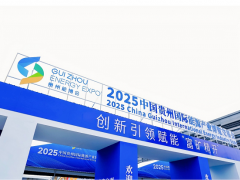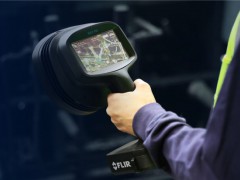新方法將廢塑料轉化為熱解油,其中含有各種工業中使用的有價值的烯烴
這個工藝提供了從廢塑料中提取每噸價值高達6000美元的高價值乙醇的機會
這項創新技術具有潛在的環境效益和經濟效益,為回收利用行業開辟了一條令人興奮的發展道路
據油價網2023年8月15日報道,廢塑料在這個世界隨處可見。廢塑料的價值如此之低,以至于沒有一個好規劃可以推動廢塑料回收利用率超過10%。
盡管許多美國人每周都盡職盡責地把塑料垃圾放入合適的垃圾箱里,但其中許多材料,包括柔性薄膜、多層材料和許多彩色廢塑料,是不能用傳統機械回收方法回收的。
最終,美國只有大約9%的廢塑料被重新利用,而且通常是在低價值產品中。然而,最近通過一項新技術,威斯康星大學麥迪遜分校的化學工程師們正在將低價值廢塑料轉化為高價值產品。
今年8月11日出版的《科學》雜志上描述了這種新方法,它可以增加廢塑料回收的經濟激勵,并為回收新型塑料打開大門。研究人員估計,他們的方法還可以將這些工業化學品的傳統生產過程中的溫室氣體排放量減少大約60%。
這項新技術依賴于幾種現有的化學加工技術。第一種是熱解,在無氧環境下將廢塑料加熱到高溫。其結果是熱解油,一種各種化合物的液體混合物。裂解油含有大量烯烴,這是一種簡單的碳氫化合物,是當今化學品和聚合物的主要組成部分,包括各種類型的聚酯、表面活性劑、醇和羧酸。
在目前的能源密集型工藝中,如蒸汽裂解,化學品制造商通過將石油置于極高的熱量和壓力下生產烯烴。在這個新工藝中,威斯康星大學麥迪遜分校的研究小組從裂解油中回收烯烴,并將其用于一種能源消耗更少的稱為均相氫甲酰化催化的化學過程。這個過程將烯烴轉化為醛,然后醛可以進一步還原成重要的工業乙醇。
化學和生物工程教授喬治·胡貝爾說:“這些產品可以用來制造各種價值更高的材料。”胡貝爾與博士后研究員李厚謙(音譯)和博士生吳家陽(音譯)共同領導了這項研究工作。
這些高價值的材料包括用于制造肥皂和清潔劑的成分,以及其他更有用的聚合物。
“我們對這項技術的影響感到非常興奮。”胡貝爾說,胡貝爾也是美國能源部資助的廢塑料化學升級再利用中心主任,“這是一種利用氫甲酰化化學對塑料廢物進行升級的平臺技術。”
回收利用行業可能很快就會采用這種方法。近幾年來,至少有10家大型化工公司已經建成或宣布了從廢塑料中生產裂解油設施的計劃。他們中的許多人將裂解油通過蒸汽裂解裝置生產低價值化合物。新的化學回收技術可以提供一種更可持續、更有利可圖的方法來利用這些裂解油。
李厚謙解釋說:“目前,這些化工公司沒有一個真正的好方法來升級裂解油。在這種情況下,我們可以從每噸僅價值約100美元的廢塑料中獲得價值1200至6000美元的高價值乙醇。此外,這個過程使用現有的技術和工藝來擴大生產規模相對容易。”
胡貝爾指出,這項研究是威斯康星大學麥迪遜分校幾個不同部門的合作成果。化學系系主任、氫甲酰化領域的世界級專家克拉克·蘭迪斯提出了將該技術應用于裂解油的可能性。化學和生物工程教授馬諾斯·馬瓦里卡基斯使用先進的模型來提供對化學過程的分子水平的洞察。化學和生物工程教授維克多·扎瓦拉幫助分析了該技術的經濟性和塑料廢物的生命周期。
胡貝爾說,這個團隊的下一步是調整工藝,更好地了解回收塑料廢物和催化劑組合產生的最終化學產品。
胡貝爾說:“有很多不同的產品,有很多不同的路線,我們可以利用這個平臺技術。”“我們生產的產品有巨大市場。我認為這真的可以改變廢塑料回收利用行業。”
人們希望胡貝爾教授的觀點成為現實。塑料垃圾給世界環境帶來的混亂、煩惱、污染和破壞是一個日益嚴重的問題。甚至有早期的研究表明,人類體內有少量的塑料顆粒積聚,其影響尚未完全了解。
毫無疑問,塑料是一種奇妙的材料,而且功能通過長時間的應用得到了充分證明。任何理性人士都不會反對使用它們。但是,市場增長和各種各樣的用途使塑料垃圾遍布全球。廢塑料污染問題正在成為一個龐然大物,遲早將會得到處理。
李峻 譯自 油價網
原文如下:
Recycling Breakthrough Makes Plastic Waste A High Value Commodity
· The new method converts waste plastic into pyrolysis oil, which contains valuable olefins used in various industries.
· This process offers an opportunity to derive high-value alcohols worth up to $6,000 per ton from waste plastics.
· The innovative technique presents potential environmental benefits, economic gains, and an exciting path forward for the recycling sector.
The world is awash in waste plastic. Its value is so low that no good program exists to drive the recycling effort past 10%.
Although many Americans dutifully deposit their plastic trash into the appropriate bins each week, many of those materials, including flexible films, multilayer materials and a lot of colored plastics, are not recyclable using conventional mechanical recycling methods.
In the end, only about 9 percent of plastic in the United States is ever reused, often in low-value products. With a new technique, however, University of Wisconsin-Madison chemical engineers are turning low-value waste plastic into high-value products.
The new method, described in the Aug. 11, 2023 issue of the journal Science, could increase the economic incentives for plastic recycling and open a door to recycling new types of plastic. The researchers estimate their methods could also reduce greenhouse gas emissions from the conventional production of these industrial chemicals by roughly 60 percent.
The new technique relies on a couple of existing chemical processing techniques. The first is pyrolysis, in which plastics are heated to high temperatures in an oxygen-free environment. The result is pyrolysis oil, a liquid mix of various compounds. Pyrolysis oil contains large amounts of olefins – a class of simple hydrocarbons that are a central building block of today’s chemicals and polymers, including various types of polyesters, surfactants, alcohols and carboxylic acids.
In current energy-intensive processes like steam cracking, chemical manufacturers produce olefins by subjecting petroleum to extremely high heat and pressure. In this new process, the UW-Madison team recovers olefins from pyrolysis oil and uses them in a much less energy-intensive chemical process called homogenous hydroformylation catalysis. This process converts olefins into aldehydes, which can then be further reduced into important industrial alcohols.
“These products can be used to make a wide range of materials that are higher value,” said George Huber, a professor of chemical and biological engineering who led the work alongside postdoctoral researcher Houqian Li and PhD student Jiayang Wu.
These higher-value materials include ingredients used to make soaps and cleaners, as well as other more useful polymers.
“We’re really excited about the implications of this technology,” said Huber, who also directs the Department of Energy-funded Center for the Chemical Upcycling of Waste Plastics. “It’s a platform technology to upgrade plastic waste using hydroformylation chemistry.”
The recycling industry could adopt the process soon; in recent years, at least 10 large chemical companies have built or announced plans for facilities to produce pyrolysis oils from waste plastics. Many of them run the pyrolysis oil through steam crackers to produce low-value compounds. The new chemical recycling technique could provide a more sustainable and lucrative way to use those oils.
Li explained, “Currently, these companies don’t have a really good approach to upgrade the pyrolysis oil. In this case, we can get high-value alcohols worth $1,200 to $6,000 per ton from waste plastics, which are only worth about $100 per ton. In addition, this process uses existing technology and techniques. It’s relatively easy to scale up.”
Huber noted the study was a collaborative effort across a few different UW-Madison departments. Clark Landis, chair of the Department of Chemistry and a world expert on hydroformylation, suggested the possibility of applying the technique to pyrolysis oils. Chemical and biological engineering Professor Manos Mavarikakis used advanced modeling to provide molecular-level insight into the chemical processes. And chemical and biological engineering Professor Victor Zavala provided help analyzing the economics of the technique and the life cycle of the plastic waste.
The next step for the team is to tune the process and better understand what recycled plastics and catalyst combinations produce which final chemical products.
“There are so many different products and so many routes we can pursue with this platform technology,” said Huber. “There’s a huge market for the products we’re making. I think it really could change the plastic recycling industry.”
One hopes the professor’s view comes true. The mess, annoyance , pollution and damage due to plastic waste in the environment is a fast growing problem. There are even early of research efforts showing tiny bit of plastic accumulating in our bodies – to effects not yet fully understood.
Plastics are wonderful materials, no doubt and fully proven. No one with any sense is opposed to their use. But the growth of the market and vast array of uses that has spread the refuse across the planet is becoming a monster that would be dealt with better sooner than later.
免責聲明:本網轉載自其它媒體的文章及圖片,目的在于弘揚石化精神,傳遞更多石化信息,宣傳國家石化產業政策,展示國家石化產業形象,參與國際石化產業輿論競爭,提高國際石化產業話語權,并不代表本網贊同其觀點和對其真實性負責,在此我們謹向原作者和原媒體致以崇高敬意。如果您認為本站文章及圖片侵犯了您的版權,請與我們聯系,我們將第一時間刪除。







